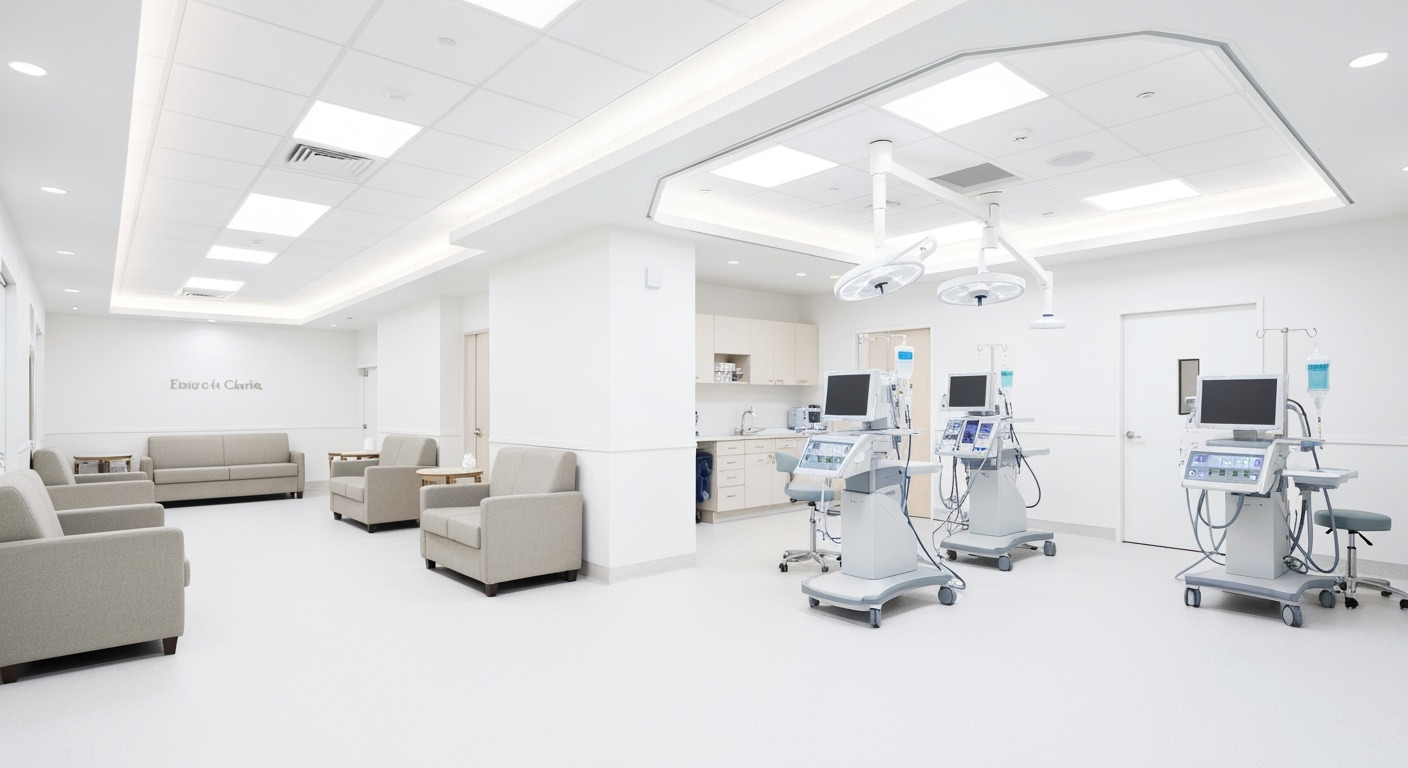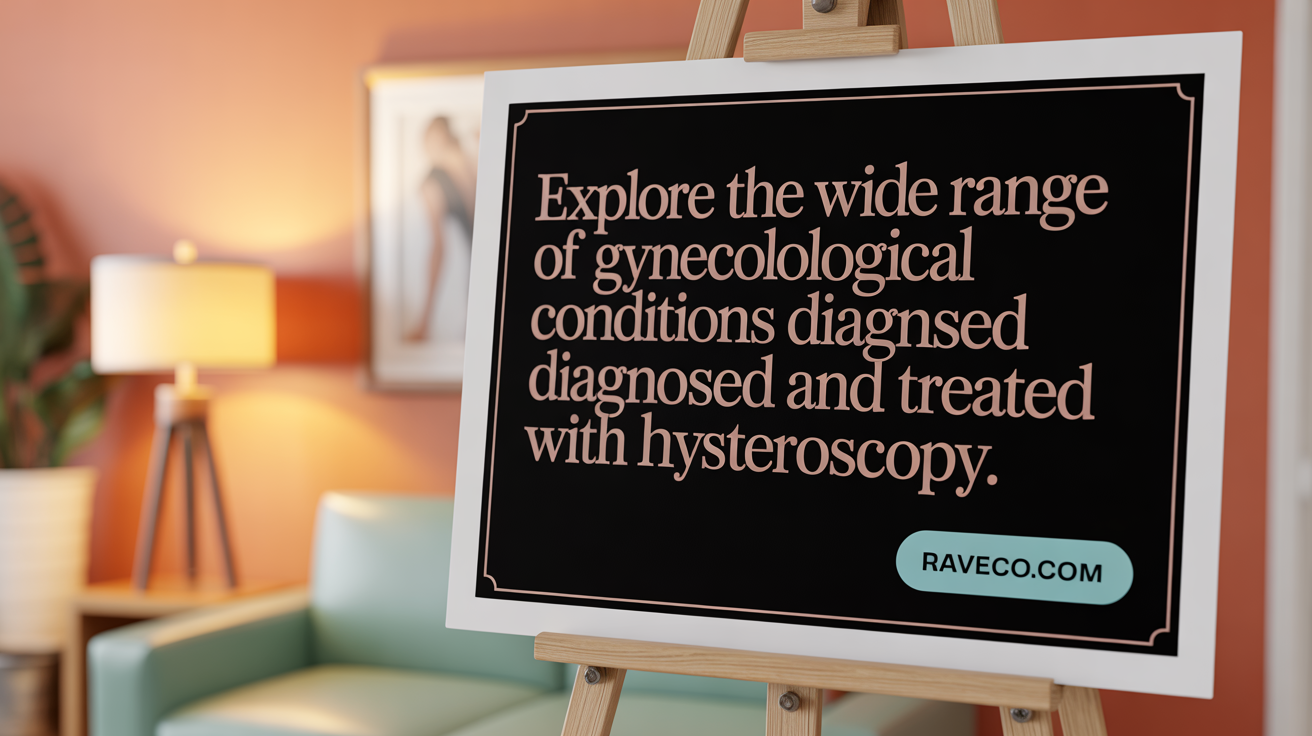Recognizing the Right Time to Address Female Infertility: Key Indicators and Expert Care in Queens

Introduction to Hysteroscopy
Hysteroscopy stands as an essential tool in modern gynecology, providing a minimally invasive method to examine and treat the interior of the uterus. This procedure has revolutionized the diagnosis and management of various uterine conditions, from abnormal bleeding to infertility. This article delves into the details of hysteroscopy, outlining what it entails, how it is performed, its medical uses, preparation, recovery, and associated risks, offering a complete understanding from diagnosis through treatment.
What is Hysteroscopy? An Overview
 Hysteroscopy is a minimally invasive medical technique used to examine and treat conditions inside the uterus. It involves the use of a small, thin tube called a hysteroscope, which contains a light and camera. The hysteroscope is carefully inserted through the vagina and cervix, allowing direct visualization of the uterine cavity.
Hysteroscopy is a minimally invasive medical technique used to examine and treat conditions inside the uterus. It involves the use of a small, thin tube called a hysteroscope, which contains a light and camera. The hysteroscope is carefully inserted through the vagina and cervix, allowing direct visualization of the uterine cavity.
This procedure serves both diagnostic and therapeutic purposes. Diagnostically, it can identify issues like abnormal uterine bleeding, polyps, fibroids, adhesions, and septums. Therapeutically, it enables removal of polyps, fibroids, or adhesions and can address structural abnormalities, often during a single session.
The equipment used includes various types of hysteroscopes—rigid or flexible—depending on the specific requirement. These scopes are connected to light sources and video systems, providing real-time images. Distending media such as saline or carbon dioxide gas are used to expand the uterine walls for better viewing.
Hysteroscopy is conducted in outpatient settings, offering advantages like no need for hospital admission, no substantial recovery time, and often no anesthesia or just local anesthesia. Patients typically experience minimal discomfort and can resume normal activities quickly.
Compared to traditional surgical methods, hysteroscopy allows for less invasive interventions with fewer complications and shorter recovery periods. It is especially favored for its safety, efficiency, and ability to combine diagnosis and treatment seamlessly.
In summary, hysteroscopy is a vital tool in modern gynecology, enhancing the diagnosis and management of numerous uterine conditions with high safety and patient convenience.
Types of Hysteroscopy and Their Applications
 Hysteroscopy is a versatile gynecologic procedure used to diagnose and treat intrauterine conditions. There are primarily two types: diagnostic and operative hysteroscopy. Diagnostic hysteroscopy involves examination of the uterine cavity to identify abnormalities such as polyps, fibroids, adhesions, or septa. It is usually performed to confirm ultrasound or hysterosalpingography findings and does not involve surgical intervention.
Hysteroscopy is a versatile gynecologic procedure used to diagnose and treat intrauterine conditions. There are primarily two types: diagnostic and operative hysteroscopy. Diagnostic hysteroscopy involves examination of the uterine cavity to identify abnormalities such as polyps, fibroids, adhesions, or septa. It is usually performed to confirm ultrasound or hysterosalpingography findings and does not involve surgical intervention.
Operative hysteroscopy, on the other hand, is used when abnormalities require treatment. During this procedure, surgical instruments are inserted through the hysteroscope to remove polyps, fibroids, adhesions, or correct other structural issues. Both types can be performed in outpatient settings, with or without anesthesia, depending on the complexity.
Hysteroscopes come in flexible and rigid forms. Flexible hysteroscopes provide greater maneuverability, especially in complex uterine anatomies, and are often preferred for diagnostic purposes. Rigid hysteroscopes are typically used for operative procedures, such as tissue removal, because they accommodate a wide range of surgical instruments.
The procedure can be performed in different clinical environments. Office hysteroscopy, often done without general anesthesia, offers enhanced patient convenience, minimal recovery time, and reduces healthcare costs. In contrast, some complex surgeries may require a surgical facility or hospital setting, with general anesthesia, to ensure optimal conditions.
Another advantage of modern hysteroscopy is the possibility to combine diagnostic and therapeutic steps within a single session. This approach allows for efficient evaluation and treatment, reducing the need for multiple procedures and improving patient outcomes.
In summary, hysteroscopy exists in various forms tailored to specific diagnostic or therapeutic needs. The choice depends on factors such as the suspected pathology, patient anatomy, equipment availability, and clinician expertise, all contributing to safe and effective management.
Medical Indications: Conditions Diagnosed and Treated with Hysteroscopy
 Hysteroscopy serves as a versatile tool in gynecology, capable of diagnosing and treating numerous intrauterine conditions. It allows physicians to directly visualize the uterine cavity and perform targeted interventions.
Hysteroscopy serves as a versatile tool in gynecology, capable of diagnosing and treating numerous intrauterine conditions. It allows physicians to directly visualize the uterine cavity and perform targeted interventions.
Common uterine pathologies detectable through hysteroscopy include polyps, fibroids, intrauterine adhesions (also known as Asherman’s syndrome), septa, and areas of endometrial hyperplasia. These pathologies often contribute to abnormal uterine bleeding, infertility, and recurrent pregnancy loss.
Indications for hysteroscopy extend beyond pathology detection. The procedure is frequently employed when abnormal uterine bleeding is present, especially if ultrasound suggests structural abnormalities or if bleeding is postmenopausal. It is also used to investigate causes of infertility and recurrent miscarriages, helping to identify structural issues that might hinder conception or normal pregnancy progression.
In addition, hysteroscopy is essential for evaluating intrauterine foreign bodies such as intrauterine devices (IUDs). It can be used to locate and remove displaced or embedded IUDs, preventing complications.
Therapeutically, hysteroscopy enables procedures like removal of polyps, fibroids, or adhesions, and resection or septum removal to improve uterine anatomy. Endometrial ablation can be performed to treat heavy menstrual bleeding, reducing symptoms significantly.
It also plays a crucial role in complex cases such as faulty conception or miscarriage, where diagnosis and correction of anatomical abnormalities increase the likelihood of successful pregnancy.
Furthermore, hysteroscopic techniques are valuable in managing retained products of conception after miscarriage or childbirth, reducing the need for more invasive surgical options.
Since the procedure can be carried out in outpatient or office settings, it minimizes patient downtime and discomfort, making it an ideal first-line approach for many uterine conditions. Overall, hysteroscopy remains a gold standard for minimally invasive diagnosis and management of intrauterine pathology, significantly enhancing fertility and gynecological health.
Procedures and Techniques Employed in Hysteroscopy
 Hysteroscopy is a minimally invasive procedure that involves several precise steps to evaluate and treat intrauterine conditions. The process begins with thorough patient preparation, including explaining the procedure, obtaining informed consent, and conducting necessary assessments such as sensitivity to medications and recent pregnancy status. Proper positioning of the patient in lithotomy position facilitates access.
Hysteroscopy is a minimally invasive procedure that involves several precise steps to evaluate and treat intrauterine conditions. The process begins with thorough patient preparation, including explaining the procedure, obtaining informed consent, and conducting necessary assessments such as sensitivity to medications and recent pregnancy status. Proper positioning of the patient in lithotomy position facilitates access.
The core technique involves inserting a hysteroscope, which can be either rigid or flexible, through the cervix into the uterine cavity. To enable clear visualization, the uterine walls are expanded using distension media—these may be gaseous, like carbon dioxide, or liquid, such as sterile saline, lactated Ringer’s solution, or glycine. The choice of media depends on the specific procedure and safety considerations.
Cervical dilation might be necessary, especially when using a rigid hysteroscope or in cases where the cervix is stenotic. This can be achieved via pre-procedure pharmacological agents like misoprostol, mechanical dilators, or manual dilation.
Once inside the uterus, the hysteroscope’s camera provides a direct view of the endometrial lining, tubal ostia, and uterine cavity. Operators can utilize small operative instruments, such as biopsy forceps, watering channels, or energy devices, to perform biopsies, remove polyps, fibroids, adhesions, or septa.
Recent advances include hysteroscopic tissue removal systems, which streamline procedures like polypectomy and myomectomy, reducing operative time and improving complete lesion removal. To minimize risks, real-time monitoring of fluid volume is essential, preventing fluid overload. Careful handling of instrumentation reduces chances of uterine perforation or injury.
Pain management varies according to the setting and patient needs, ranging from local anesthesia, oral analgesics, to sedation or general anesthesia for complex or extensive procedures. The goal is to ensure patient comfort while maintaining safety.
Overall, hysteroscopy combines diagnostic and operative techniques, allowing clinicians to effectively investigate and treat intrauterine pathologies in one session, with minimal complications and rapid recovery.
Anesthesia and Pain Management in Hysteroscopy
Why is general anesthesia sometimes used for hysteroscopy?
During hysteroscopy, particularly in operative procedures involving extensive intervention like fibroid or adhesion removal, general anesthesia may be employed to ensure patient comfort. It renders the patient fully unconscious and relaxes the muscles, which can facilitate a smoother procedure and better visualization.
In diagnostic hysteroscopy, clinicians usually prefer local or no anesthesia because the procedure tends to be less invasive. However, the choice depends on the procedure complexity, patient pain tolerance, and the clinician's judgment.
General anesthesia is especially valuable when the procedure duration is expected to be long or if patient movement might interfere with safety and accuracy. It also helps prevent discomfort during painful or more invasive interventions, making it the preferred option in such cases.
How painful is hysteroscopy without anesthesia?
Experiences of pain during hysteroscopy performed without anesthesia vary significantly. Some women report only mild cramping or discomfort, while others find it more painful. Several factors influence perceived pain, including individual pain thresholds, the size and position of uterine lesions, and whether cervical ripening agents were used.
To help minimize discomfort, various techniques can be utilized. Pharmacological methods like administering NSAIDs, paracervical blocks, or medications such as misoprostol prior to the procedure can significantly alleviate pain.
Non-pharmacological approaches, like providing detailed information about the procedure, playing calming music, or using minimally invasive techniques such as vaginoscopy, can also enhance patient comfort.
Proper cervical ripening with agents like misoprostol, usually given 12 hours ahead, can soften the cervix and reduce the pain associated with insertion. Additionally, regulating the pressure of the distending media—favoring normal saline over gaseous media—can contribute to a less uncomfortable experience.
Ultimately, pain management should be tailored to each patient's needs and the specific procedure, combining pharmacological and non-pharmacological strategies to improve comfort and satisfaction.
Preparation Guidelines Before Undergoing Hysteroscopy
What is the preparation required before undergoing hysteroscopy?
Preparing for a hysteroscopy involves several steps to ensure safety, comfort, and optimal results. Timing-wise, the procedure should ideally be scheduled during the early part of the menstrual cycle, right after menstruation ends. Performing the procedure in this phase provides a clearer view inside the uterine cavity and decreases the likelihood of pregnancy, which must be reasonably excluded beforehand.
Patients should avoid douching, using tampons, or applying vaginal medicines and products for at least 24 hours before the procedure. This helps prevent interference with the procedure and maintains a natural environment for examination.
Medication adjustments might be necessary—guidance includes taking prescribed drugs to help soften the cervix, such as misoprostol, a day before the procedure if recommended by the healthcare provider. It is crucial to inform your doctor of all current medicines, especially blood thinners or anticoagulants, to assess whether any adjustments are needed to reduce bleeding risks.
Prior to the hysteroscopy, patients are usually advised to fast after midnight if anesthesia or sedation is planned, meaning no food or liquids should be consumed. This reduces anesthesia-related risks and complications.
For body preparation, a shower with an antiseptic soap like Hibiclenz is recommended to reduce infection risk. Patients should also remove jewelry, makeup, and any vaginal suppositories or douches, and wear loose, comfortable clothing. Following all specific instructions provided by your healthcare team is essential for a safe and effective procedure.
In addition, arranging for transportation home after the procedure is important, especially if sedation or anesthesia is used. Adequate preparation helps improve comfort, safety, and the accuracy of diagnostic or therapeutic outcomes during hysteroscopy.
Recovery and Aftercare Following Hysteroscopy
What can patients expect after hysteroscopy in terms of recovery and aftercare?
After a hysteroscopy, most women experience mild cramping, similar to menstrual discomfort, and may notice vaginal discharge or light bleeding that can last up to two weeks. Sometimes, the bleeding may be heavier than usual menstrual flow or appear unexpectedly, which is generally normal unless it persists or worsens.
Many individuals are able to return to their regular activities within 24 hours. This includes showering, eating, and light walking. However, certain restrictions are advised to promote healing and prevent complications. Patients should avoid strenuous exercise, sexual intercourse, using tampons, douching, or taking baths for at least a week, or as directed by their healthcare provider.
Pain management is straightforward. Applying a heating pad can help reduce cramping, and over-the-counter pain relievers such as paracetamol (acetaminophen) or ibuprofen can alleviate discomfort. Rest as needed and monitor your symptoms during recovery.
Follow-up appointments are essential to ensure proper healing and to discuss any tissue samples or additional treatments. Patients should be alert for signs of infection or complications, including fever, heavy or foul-smelling bleeding, severe pain, or dizziness. These symptoms warrant prompt medical attention.
For safety, avoid driving, alcohol consumption, or operating machinery for at least 24 hours if sedation or anesthesia was used during the procedure. Additionally, patients should hold off on trying to conceive until their doctor confirms it’s safe to do so.
Overall, careful post-procedure care helps maximize recovery and reduces the risk of complications, contributing to a successful outcome following hysteroscopy.
Risks and Potential Complications of Hysteroscopy
What are the risks and possible complications associated with hysteroscopy?
Hysteroscopy is considered a safe procedure with a low overall complication rate of less than 1%. However, like all surgical interventions, it carries some risks. The most common intraoperative issues include uterine perforation, which occurs in about 1-1.5% of cases, and cervical lacerations, which may happen during cervix dilation or instrument insertion. Heavy bleeding can also occur, especially during procedures such as myomectomy.
Less frequent but significant complications involve infections, adverse reactions to anesthesia, and inadvertent damage to surrounding organs like the bowel or bladder. Serious complications are rare but can include venous gas embolism, which can be life-threatening, fluid overload leading to hyponatraemia, and cardiovascular problems related to distension media or electrosurgical instruments.
It is essential that the procedure is performed with proper techniques, thorough preoperative assessment, and continuous monitoring. Using safety protocols such as fluid monitoring helps prevent issues like fluid overload. In experienced hands, these risks are minimized, and any arising complications can typically be managed effectively.
How is uterine perforation managed?
Uterine perforation, although infrequent, requires immediate attention. When detected, management depends on the severity and whether the perforation caused damage to surrounding tissues. Many perforations are small and can be watched with close observation, but larger or complicated perforations may necessitate surgical intervention.
What precautions are taken to prevent fluid overload?
Monitoring of distending media is critical during the procedure. Specific thresholds for maximum fluid deficit are established based on the solution type used, such as saline or glycine. Prompt action, including halting the procedure and providing supportive care, is vital if fluid overload signs emerge.
Are antibiotics required to prevent infections?
Routine antibiotic prophylaxis is generally not recommended as infection rates are low. Nonetheless, aseptic techniques, including proper sterilization of equipment and careful procedural conduct, are essential to prevent infections.
What other risks should patients be aware of?
Other risks include gas embolism, a rare but severe event that can occur during the use of gaseous media like carbon dioxide. Vasovagal reactions, characterized by fainting or dizziness, can happen due to procedural discomfort; supportive care and position adjustments are usually effective, with atropine used in severe cases.
Role of a multidisciplinary team?
The safety of hysteroscopy procedures benefits from a team approach involving clinicians, nurses, and anesthetists, especially during surgical or inpatient procedures. Their combined expertise ensures proper patient selection, preparation, and complication management.
| Risk Type | Incidence/Notes | Preventive Measures | Management Strategies |
|---|---|---|---|
| Uterine perforation | 1-1.5% | Skilled technique, gentle insertion | Observation, surgical repair if needed |
| Fluid overload | Variable, depends on monitoring | Strict fluid monitoring thresholds | Halt procedure, supportive care |
| Infection | Low, but prevention via asepsis | Sterile technique, minimal antibiotic use | Antibiotics if infection occurs |
| Gas embolism | Very rare | Avoid excessive gas pressure | Immediate decompression, supportive care |
| Vasovagal reactions | Occasional, usually mild | Adequate anesthesia and patient comfort | Position change, medications if severe |
Overall, understanding and mitigating these risks allows hysteroscopy to remain a safe and effective diagnostic and treatment tool in gynecology.
The Role and Advantages of In-Office Hysteroscopy

Patient preference and convenience
In-office hysteroscopy has become increasingly popular among women due to its convenience and patient-centered approach. Many women prefer outpatient procedures because they can be performed in a comfortable setting, avoiding the need for hospital stays or general anesthesia. This preference is supported by higher satisfaction rates, quicker recovery times, and the ability to return to daily activities sooner.
Avoiding general anesthesia
One of the main benefits of office hysteroscopy is that it often does not require general anesthesia. Instead, local anesthetics, NSAIDs, or other pain relief methods are used, reducing the risks associated with anesthesia and making the procedure more accessible. Supportive measures, like intravaginal misoprostol before the procedure, can further decrease discomfort.
Cost-effectiveness
Performing hysteroscopy in an outpatient setting generally reduces healthcare costs. It avoids hospital fees, anesthesia charges, and longer recovery times. This cost efficiency benefits both healthcare systems and patients, making it an attractive option for many indications such as evaluating abnormal uterine bleeding.
Use of vaginoscopy technique
Vaginoscopy, a technique where the procedure is performed without using a speculum or cervical instrumentation, can significantly lower pain levels. This minimally invasive method simplifies the procedure and enhances patient comfort, especially during office-based hysteroscopy.
Shorter recovery and immediate treatment options
Patients often experience minimal discomfort post-procedure, with many resuming normal activities within a day. Office hysteroscopy allows for immediate treatment of intrauterine conditions like polyps or fibroids, reducing the need for multiple visits or surgeries. This streamlined approach improves overall patient care and satisfaction.
Conclusion: Transforming Uterine Care with Hysteroscopy
Hysteroscopy has profoundly advanced the field of gynecology by enabling precise diagnosis and effective treatment of diverse uterine conditions through a minimally invasive approach. Its dual diagnostic and therapeutic capabilities, coupled with safety, patient comfort, and efficiency, make it an indispensable procedure in women's health. From the initial examination to operative interventions, the technique continues to evolve with technological innovations improving outcomes and patient experiences. Proper preparation, skilled technique, and vigilant management of risks ensure that hysteroscopy remains a valuable standard of care, enhancing fertility, resolving abnormal bleeding, and improving quality of life for many women worldwide.
References
- The Use of Hysteroscopy for the Diagnosis and Treatment of ... - ACOG
- Hysteroscopy: Purpose, Procedure, Risks & Recovery
- Hysteroscopy - StatPearls - NCBI Bookshelf
- Hysteroscopy | Johns Hopkins Medicine
- Diagnostic and Operative Hysteroscopy
- Hysteroscopy: Understanding This Flexible Diagnostic and ...
- Hysteroscopy Procedure for Infertility Diagnosis at CCRM Fertility
- Understanding Hysteroscopy and What to Expect - Banner Health





.png)